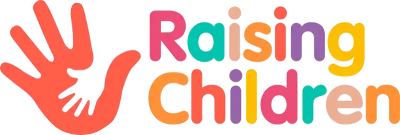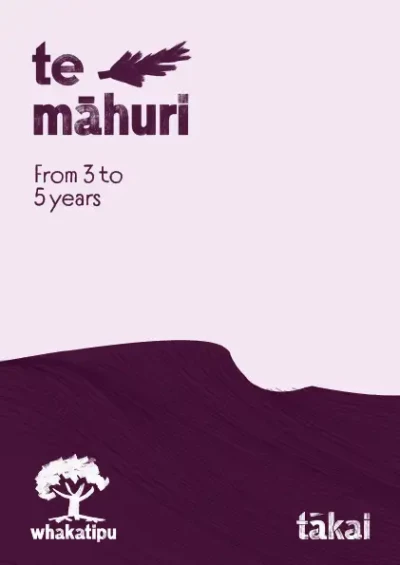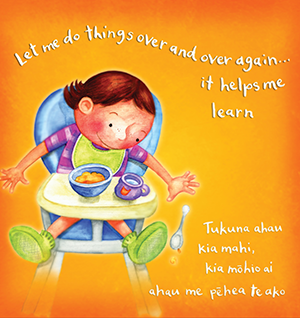
Moving and using big muscles
Whānau will be noticing how their child has developed in just 3 years. They are developing and learning skills in every physical experience they have. Keeping tamariki safe while they play outside is something whānau need to be aware of.
Look at page 9 of the Whakatipu booklet Te Māhuri where whānau talk about how fast and how confidently their tamaiti runs. On page 7, tamaiti says "I like to ride fast on my bike. I can go faster than you!"
Ask whānau:
- What have you noticed your tamaiti doing lately that involves using their big muscles?
- What have you seen them getting more confident at?
Practice makes progress
Talk with whānau about how their tamaiti has made huge progress in their physical development in just 3 years. Each new skill leads to the development of others.
Reflect back on the early days and how they progressed from lying flat to rolling, from getting up on all fours to sitting, from crawling to standing and then cruising along the furniture. Before long, they were standing alone, then taking a couple of wobbly steps, and then walking easily and independently.
Active play helps tamariki to get stronger, more coordinated, more confident and more skilled.
Ask whānau:
- What type of active play do you remember enjoying when you were growing up?
- Who joined in with you?
Mastering their moves
During this period, tamariki enjoy practising and mastering movements like walking backwards, standing on tiptoe, running, jumping, pedalling, climbing, balancing, swinging and sliding.
Through regular practice, they’ll improve their ball skills in throwing, kicking and catching.
Ask whānau:
- How do you think your tamaiti will continue to grow stronger, more skilled, faster or more agile?
This could be an opportunity to talk about:
- being more active, playing different games and activities together
- getting outdoors to enjoy nature: te moana , te awa , te ngahere
- participating in sports and kapa haka and having fun at playgrounds together.
Look at the play activities in this resource that whānau can enjoy doing with their tamariki. Many will include ideas for strengthening skills that use big muscles.
Try an activity
Jumping
Jumping uses large muscles and builds on their walking, running and climbing skills.
Lots of learning in the great outdoors
When kids are playing outdoors in the fresh air, they’re using their whole bodies, and most – if not all – of their senses. When their whānau are alongside them to guide, explain, support, protect, encourage and show them the world, being outside can be a very rich learning opportunity.
- What does your whānau enjoy doing together outdoors?
Keeping tamariki safe
On page 9 of Te Māhuri, whānau talk about what they’re doing to make sure their tamaiti stays safe while being active.
It helps to think about areas that might be unsafe and what whānau can do to reduce the risks for their tamaiti.
Think about driveways, stairs, drains, swimming pools or other dangers around water and what might need to be done to ensure their tamaiti is safe in these areas.
Ask whānau:
- How safe do you think it is for your kids in and around your whare ?
- Are there any areas you worry about?
- What can you do about those?
- Are there things that you might need others to help you with?
Children learn from experiences
All activities shared as a whānau provide learning experiences for tamariki. It’s important, though, to think about the appropriateness of certain activities and what they might be teaching tamariki.
The quote from Dame Whina Cooper, ‘Watch what they hear, watch what they see’, reminds us that everything can be a teaching and learning experience. The good, the bad and the ugly!
Helpful resources for whānau
-

The importance of being active
Raising Children NZ
This video on the Raising Children New Zealand website reminds us about the vital link between physical activity and brain development.
-

Safekids Aotearoa
Safekids Aotearoa provides practical advice based on international research, local knowledge and mātauranga, to help keep children safe from serious injuries like falls, drowning and incidents on the road.
 pdf 11 MB
pdf 11 MB












